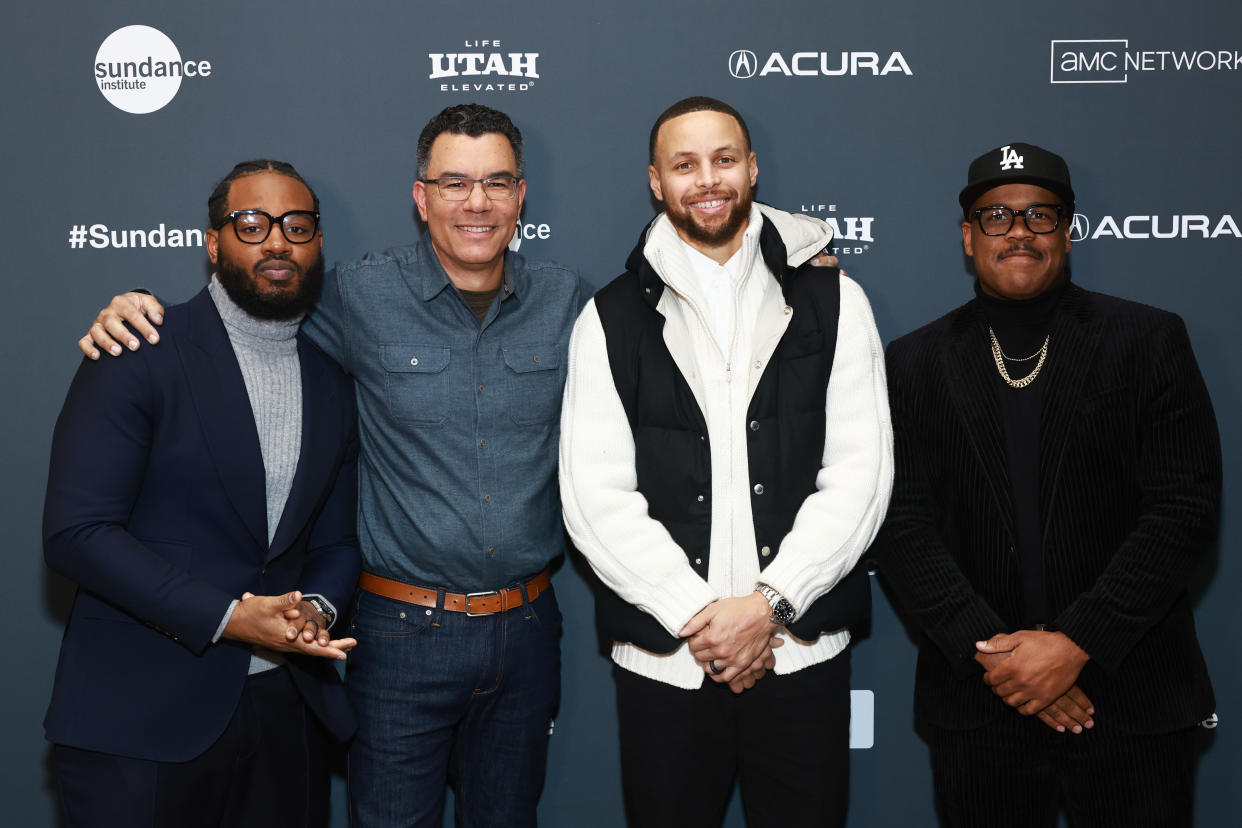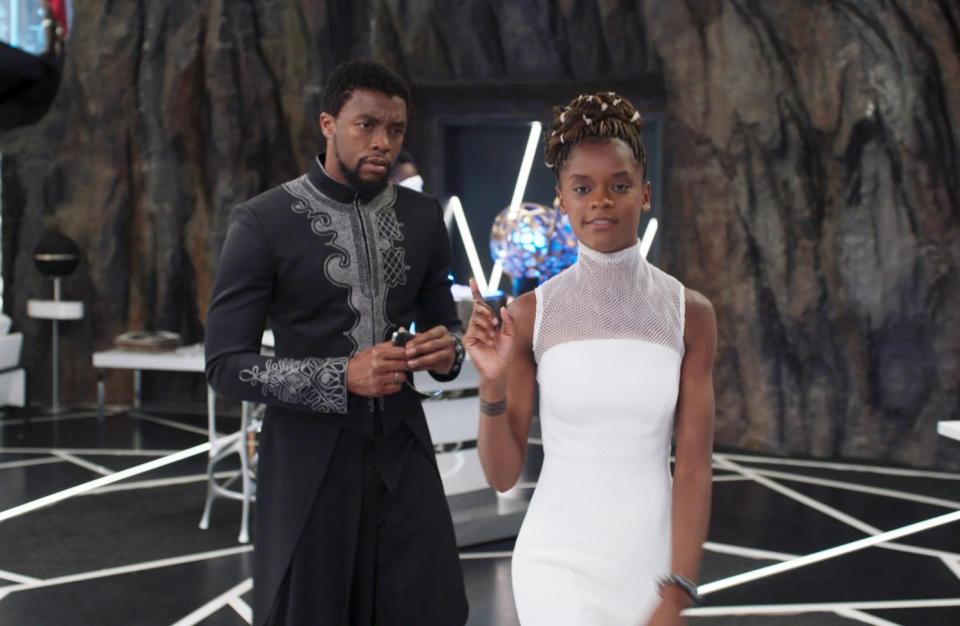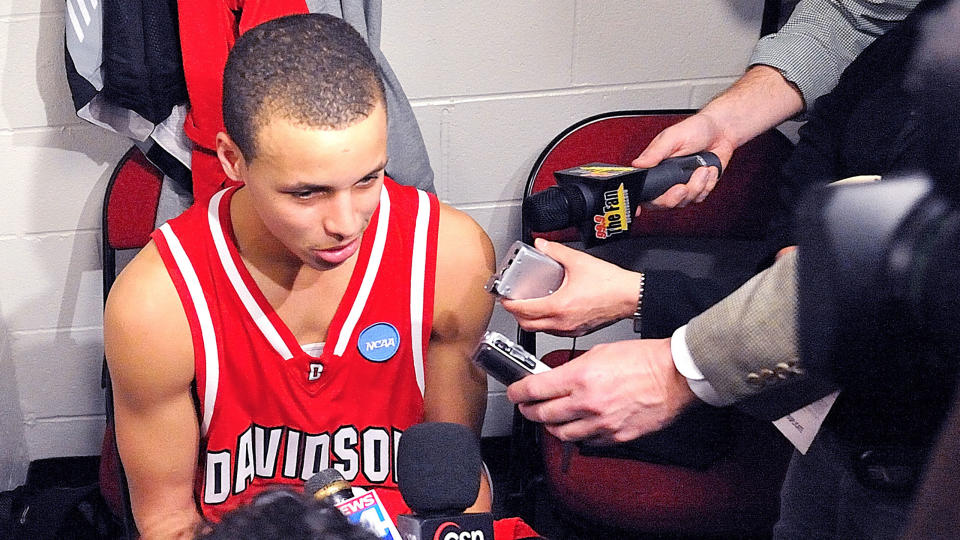Ryan Coogler and Peter Nicks on Strike Solidarity and Making Documentaries for Divided Times

- Oops!Something went wrong.Please try again later.
- Oops!Something went wrong.Please try again later.
- Oops!Something went wrong.Please try again later.
- Oops!Something went wrong.Please try again later.
- Oops!Something went wrong.Please try again later.
Almost exactly 10 years ago, Ryan Coogler’s “Fruitvale” launched the young Oakland filmmaker into the upper echelons of Hollywood influence. With “Black Panther” and “Creed,” Coogler brought fresh energy and social consciousness to existing franchises while expanding their appeal to underserved audiences. Now, those efforts have expanded to the documentary realm.
Two years ago, Coogler rooted his filmmaking efforts beyond the blockbuster arena in the creation of a production company, Proximity Media, which yielded studio efforts like “Space Jam 2” and the Oscar-nominated “Judas and the Black Messiah.” Initially co-founded by Coogler with wife Zinzi Coogler and Sev Ohanian, the company eventually added a non-fiction division overseen by fellow Bay Area filmmaker Peter Nicks. Over the past year, that collaboration has yielded the company’s first two documentary releases, the Sundance-premiering NBA portrait “Stephen Curry: Underrated” and now “Anthem,” which premiered last month on Hulu. The new movie follows composer Kris Bowers and music producer Dahi as they travel across America and engage with a wide array of musicians in an effort to revise the National Anthem.
More from IndieWire
As with Coogler’s fiction work, the documentaries — both directed by Nicks — explore the nature of American identity through uplifting stories of resilience. They’re also decidedly more commercial undertakings for Nicks, who’s best-known for bracing non-fiction looks at systemic dysfunction and marginalization such as the police corruption portrait “The Force” and the healthcare exposé “The Waiting Room.”
However, in a conversation with IndieWire this week, Coogler and Nicks said they saw these recent undertakings as an expansion of efforts visible in all of their work to date. They also addressed the ongoing strikes and their plans to work with more filmmakers.
This interview has been condensed and edited for clarity.
IndieWire: With the strikes shutting down Hollywood production, do you see any opportunity for your work in the documentary space?
Ryan Coogler: Obviously, I’m a WGA member and I support my fellow writers and have solidarity with SAG as well. This non-fiction work is not part of that agreement. I’m super-stoked to support Pete with his films he’s made. But yeah, bro, it’s an intense time. A lot of things are changing. We want to make great products, we want to make great art, great things that people connect with. Right now with fiction we can’t do that out of solidarity. But non-fiction is status quo for us. We want to find great things and tell more stories. It’s not like we want to do more now because of the strikes. We’re already going. We want to operate at our most efficient capacity at all times.
Peter Nicks: It’s interesting because we don’t have a union in non-fiction. I think a lot about all my friends who are writers and actors. In the non-fiction world, we like to examine systems: our democracy, our economy. All those things are very important. To a degree, that’s what this is about: What our democracy should look like. On the non-fiction side, we want to keep telling our stories to remind people of the power of storytelling. Hopefully, that adds something to the conversation.
Ryan, how do documentaries function as an extension of what you do with your narrative features?
Coogler: When we were first getting going, at first, we were focused on theatrically-related movies. We wanted to get going quickly with “Space Jam 2” and “Judas and the Black Messiah” at the same time. That was where we were at. It was around the time of the pandemic when the world changed. I haven’t talked about this really, but it felt a little bit like, “Why wait to work with the people we want to work with?” Time is not promised. It was like a new urgency to get to work in these other mediums where we had connections to people working in them. That’s when we approached Pete and started thinking about going into television and podcasts. Pete had a vision for what a Proximity movie could look like in a non-fiction space.

Nicks: I saw “Black Panther” in Utah where my daughter is in school. This is predominantly Caucasian, Mormon community. The theater was packed. That was an eye-opening experience for me. I think documentaries are already bringing people together like that. My first film was “The Waiting Room.” It’s a healthcare film that could’ve been polemical but was ultimately about people coming together in this waiting room. It transcended politics. I’ve had people come up to me who watch that film from all sides of the political spectrum to tell me how moved they were by it. As I think about building this non-fiction division under the umbrella of Ryan’s vision, it’s a powerful idea that we can reach audiences in a way that taps into the universality of the human experience even when dealing with subjects that might be polarizing.
Coogler: If you’re working on something you want to be consumed en masse, I think about these things on a thematic level: Identity, self-determination. These are fundamental aspects of humanity, no matter where somebody sits on the political, socioeconomic or ethnic perspective. Pete’s work explores that: Everybody gets sick. Unfortunately, everybody is likely to have an encounter with the police in some way, shape, or form. And everybody’s been to school or sent a child there. You already have people’s attention when you bring these things up. Everybody’s heard the National Anthem. There are several types of films where you expose a problem in the country and the film is a deep-dive exposé. But it’s rare that you watch a film expose an issue and try to do something about it with an active protagonist. That part of it really excited me. You’re following characters trying to achieve something that’s kind of unlikely. That’s what I try to do as a professional as well.
There is a frustration right now among documentary filmmakers that only high-profile commercial projects with celebrity involvement can get made. Your recent work supports that perception, so do you feel that you are hamstrung by the state of the market?
Nicks: We actually have an opportunity to not just follow the trends — whether they’re celebrity docs, true crime, et cetera — but to use these formats to go deeper on stories. With every project, even if it’s celebrity or true crime, the themes have to tap into something deeper about our diversity or our struggles. To me, that’s an opportunity. We’re just catching up to marketing this genre of non-fiction to audiences. The challenge is going to be making more films like “The Waiting Room,” “The Force,” or “Homeroom.” They’re fundamentally character-driven stories. You don’t need a celebrity or a genre element to tell a powerful story. It’s the character, the journey, the power of the filmmaker. This platform at Proximity allows me to open up and diversify the number of stories we’re telling.
Coogler: This connection between art and commerce was always apparent to me. I knew it was something we had to navigate. In a non-fiction realm, there are certain budgetary expectations, what a non-fiction film is supposed to cost. What’s an eye-popping number? You hear about a celebrity profile doc costing $15 or $20 million as opposed to an eye-popping number in the sector I work in, where you could put a zero on that. When I was coming up, someone making six figures was rich. I can’t shake that part of my upbringing that says if we’re making a movie that costs millions of dollars, we’ve got to be responsible about it and conscious that it’s something people want to see.
How do you quantity something people want to see?
Coogler: I grew up listening to Tupac records. He was the biggest thing in the world and he was making hit records without censoring himself or his ideas. Watching John Singleton and Spike Lee succeed — or even outside of my culture, watching Spielberg or Fincher or M. Night succeed, it didn’t seem like they were compromising what they wanted to see about their humanity or their own experience. At the same time they were making things people would line up to go see so they can make another one. We think about that. Our goal is to keep making things that are true that people will come see. That’s what makes this a professional business that not a lot of people can do. It’s difficult. You’re constantly measuring things and audiences are changing all the time. I think we’re going to keep making cool stuff.
Nicks: I was talking to Ryan in the early days when they were starting their company and trying to convince them to do non-fiction. It was more theoretical. Then when he asked me to do it, there was no hesitation. But I would not have said yes if it was Netflix or Disney asking me. A lot of that has to do with Ryan’s inherent integrity around joining art and commerce together. It wasn’t inherent in my approach to non-fiction. I did a lot of PBS work and that’s a decidedly non-commercial environment. But one of the things I always felt in my bones was that non-fiction was being undersold and relegated to this place that wasn’t eventized. There were some exceptions, like Michael Moore, but those were polemical stories. I felt that there was an opportunity in the market for the real human stories. That’s part of what I’m trying to push forward.
Ryan, you’ve been empowered to support work like this due to your success with “Creed” and “Black Panther.” Do you expect to keep making movies on that scale or are you ready to move on with the resources at your disposal?
Coogler: We want to make movies that are eventized, but that doesn’t have anything to do with the budget. We made “Judas,” “Space Jam,” “Creed III,” and those three movies are so different in terms of budget. But what matters most to me is the release. If I told you what they were, would you want to go see them? If I said, “Shaka King’s new movie is ‘The Departed’ set in the world of COINTELPRO,” would you want to rush to go see that? Is it a great piece of cinema? I’m hoping that whatever success I have lets me make more things that I’m interested in regardless of whatever size they are. I made a movie under a million and another that was over $200 million. I helped shoot a doc with Steph Curry and another with non-celebrity musicians. That gets me excited me about what the next 10 years will bring. I’m not looking at it from a budget perspective.

How are you assessing the kind of filmmakers you want to bring into the fold?
Coogler: It’s not only altruistic. The most exciting stuff is coming from people we haven’t seen yet. It’s just a rule. We’re always on the lookout. We have a great internship program going three years now. I’ve been working with some great up-and-coming folks in all our departments. We’re looking for filmmakers who can show us new things from their perspective.
Nicks: We’re very, very focused on the filmmaking voice as opposed to just trying to crank out projects. We’re careful about the films we choose and the filmmakers we put on to projects. We’re innovating in non-fiction. You’re starting to see a lot of ways to tell non-fiction stories. A big part of what we’re doing is looking at pitches and trying to identify exciting new directors that are out there. These two projects do happen to be ones that I directed myself but they’re reflective of the company’s ethos, which is so much about bringing audiences in closer proximity to often overlooked subjects, or to tell stories from particular perspectives that are often overlooked.
Best of IndieWire
The Best Sex Scenes of the 21st Century: 'Beau Is Afraid,' 'Call Me By Your Name,' and More
Christopher Nolan's Most Essential Collaborators, from Cillian Murphy to Ludwig Göransson
Christopher Nolan's Favorite Movies: 37 Films the Director Wants You to See
Sign up for Indiewire's Newsletter. For the latest news, follow us on Facebook, Twitter, and Instagram.

